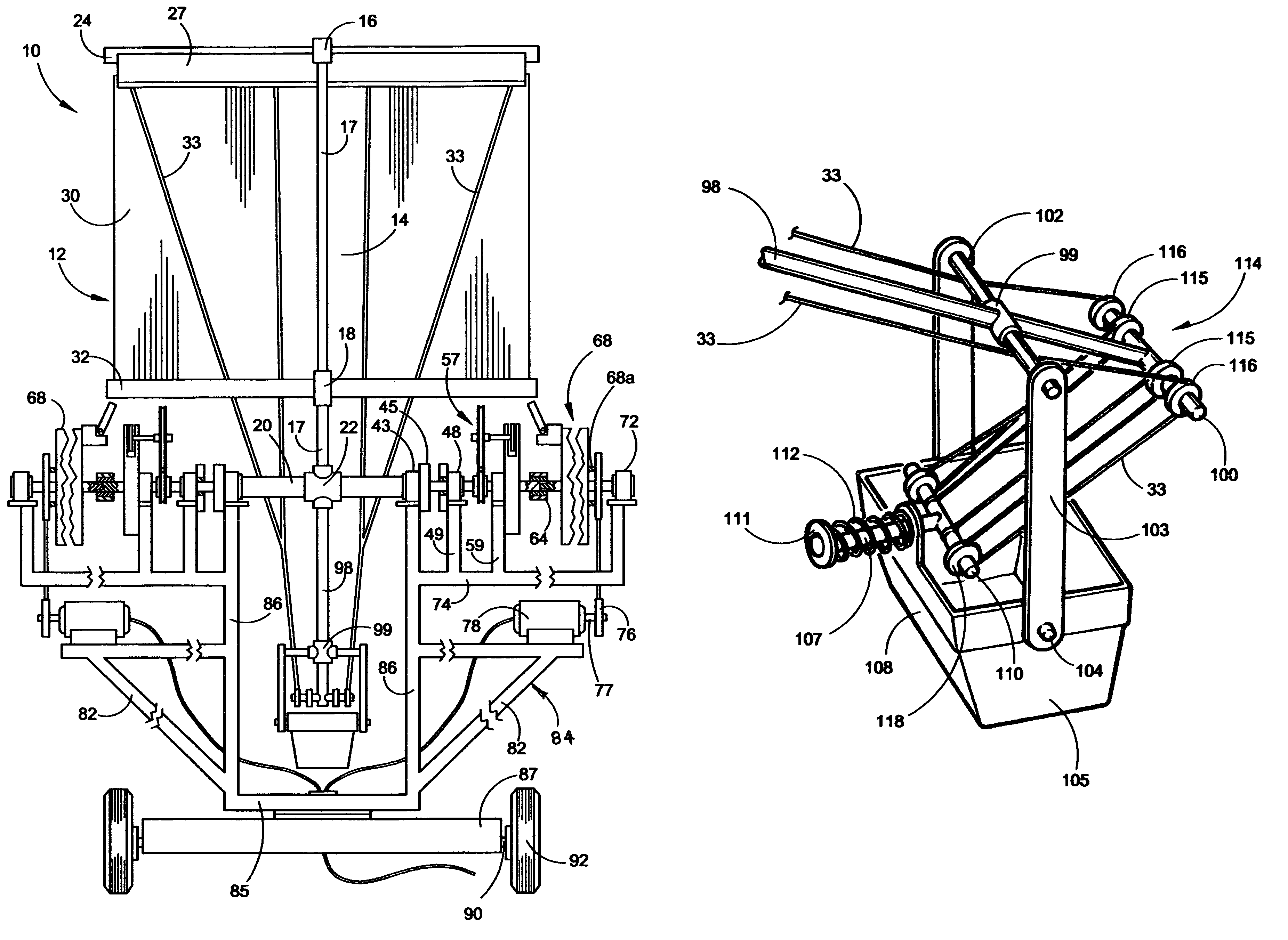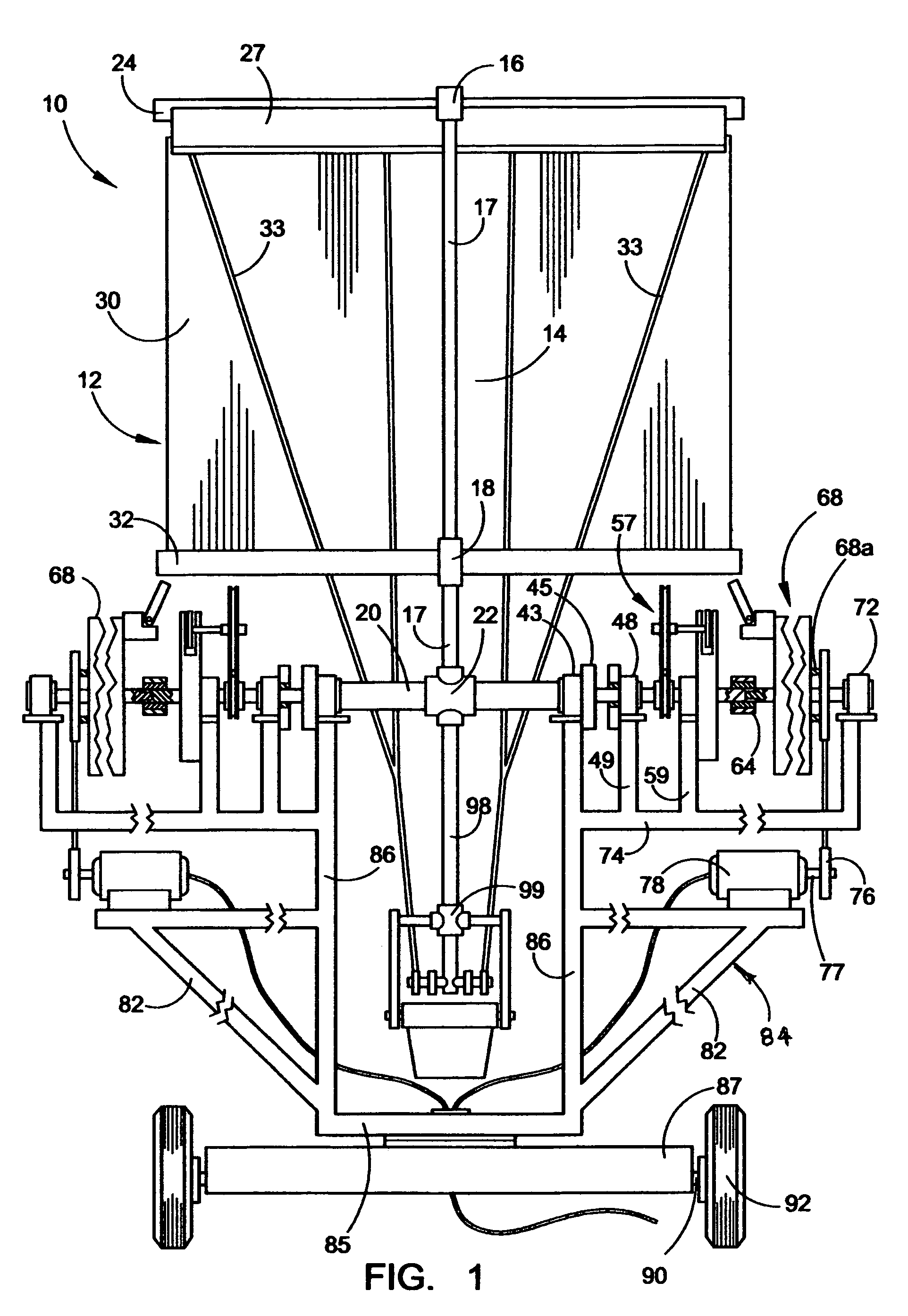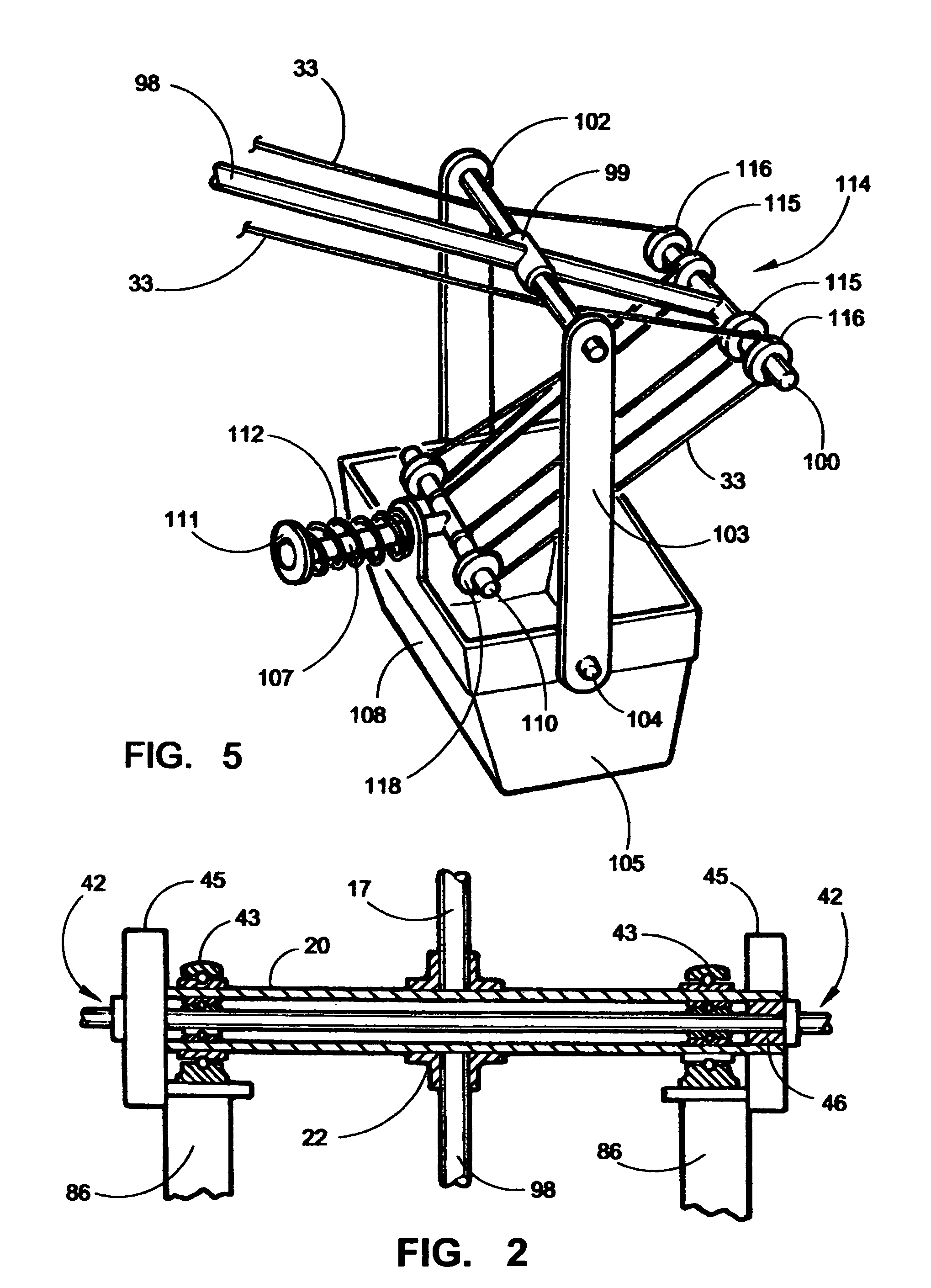Wind powered pendulating land sail electricity generation system
a pendulating land and electricity generation technology, applied in the direction of electric generator control, machine/engine, greenhouse gas reduction, etc., can solve the problems of wind generators costing more than a million dollars each, fossil fuel electric power plants consuming a large amount of the worlds non-replenishing resources of coal and oil, etc., and achieve the effect of economic manufacture and mark
- Summary
- Abstract
- Description
- Claims
- Application Information
AI Technical Summary
Problems solved by technology
Method used
Image
Examples
Embodiment Construction
[0024]The wind powered electricity generation system will now be described by referring to FIGS. 1–7 of the drawings. The portable electricity generation station 10 has at least one wind collection sail assembly 12 that is supported by an upper pole assembly unit 14. Additional wind collection said assemblies could be vertically stacked above upper coupling member 16 by extending upper pole member 17 above upper coupling member 16. Upper pole assembly unit 14 has an upper coupling member 16, an upper pole member 17, a lower coupling member 18, and a longitudinally extending Y-axis. The bottom end of upper pole assembly unit 14 is rigidly secured to spring-motor primary winding axle 20 by coupling member 22.
[0025]Referring to FIG. 4, a support member 25 has its front end connected to upper coupling member 16 and its rear end connected to the transversely extending upper support beam 24. An elongated louver flap 27 has its top edge connected to upper support beam 24. A plurality of la...
PUM
 Login to View More
Login to View More Abstract
Description
Claims
Application Information
 Login to View More
Login to View More - R&D
- Intellectual Property
- Life Sciences
- Materials
- Tech Scout
- Unparalleled Data Quality
- Higher Quality Content
- 60% Fewer Hallucinations
Browse by: Latest US Patents, China's latest patents, Technical Efficacy Thesaurus, Application Domain, Technology Topic, Popular Technical Reports.
© 2025 PatSnap. All rights reserved.Legal|Privacy policy|Modern Slavery Act Transparency Statement|Sitemap|About US| Contact US: help@patsnap.com



